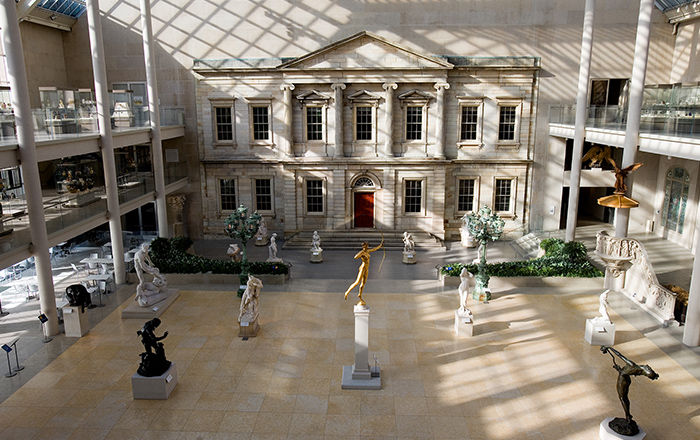Plate
Manufacturer Joseph S. Mayer
Manufactory Arsenal Pottery
Not on view
Majolica, earthenware mass-produced using molds and with bright colored glazes, was one of the most popular products in America in the 1870s and 80s, a period that became known as the “majolica craze.” It fulfilled the American middle-class desire for aesthetically minded but affordable utilitarian and decorative ceramics. Following majolica’s origins in Britain, American manufacturers, often immigrants from England, began to produce their own.
British born Joseph S. Mayer grew up in the British industry and began making majolica in 1882 at the pottery he founded in Trenton, New Jersey. His Arsenal Pottery was one of the few American firms known to produce majolica for more than a decade. Their work was particularly noted for its glazes, from vibrant hues to naturalistic browns and greens, possibly influenced by the firm’s origins as a producer of Rockingham. The charming scene of a shaggy dog with its bowl was a popular pattern. It was likely first produced in England and then copied by the Arsenal Pottery, who may have been copying a similar example by the James Carr Pottery of New York City.
